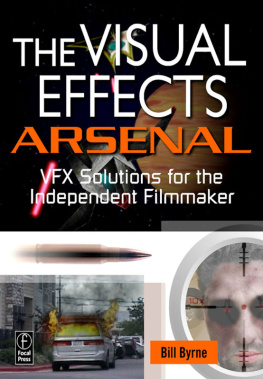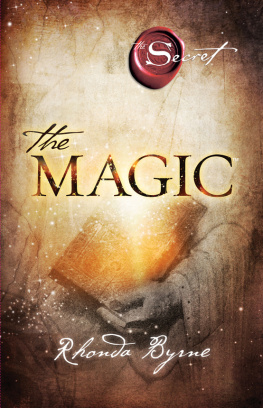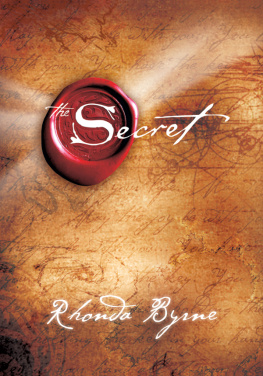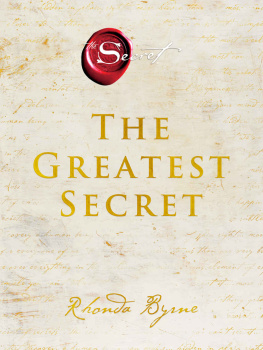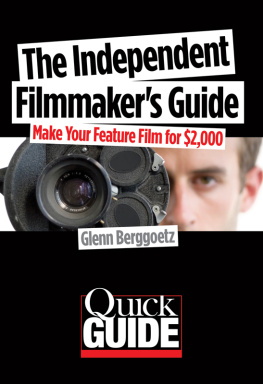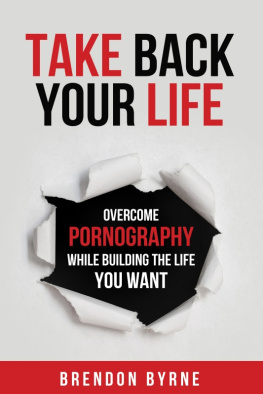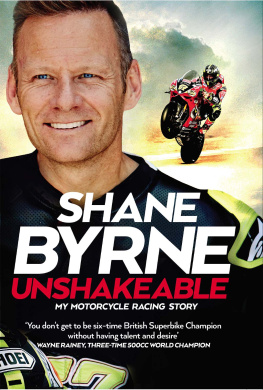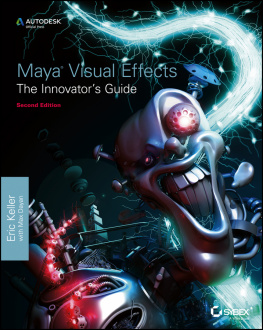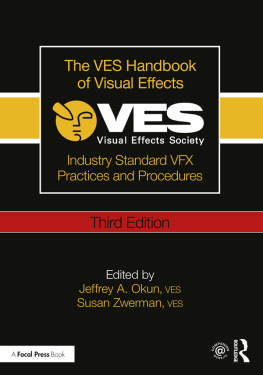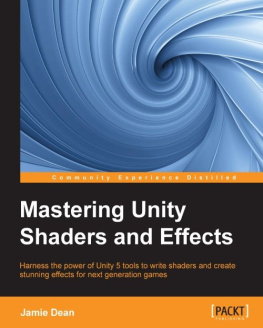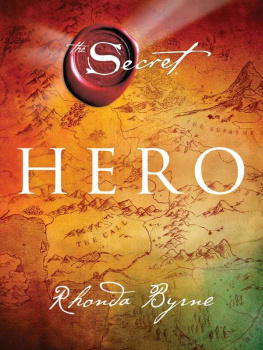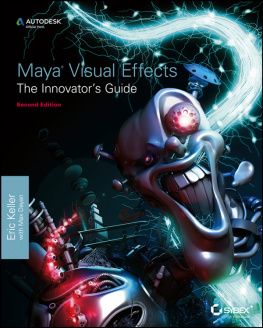Byrne - The visual effects arsenal: VFX solutions for the independent filmmaker
Here you can read online Byrne - The visual effects arsenal: VFX solutions for the independent filmmaker full text of the book (entire story) in english for free. Download pdf and epub, get meaning, cover and reviews about this ebook. year: 2015, publisher: Taylor and Francis; Focal Press, genre: Home and family. Description of the work, (preface) as well as reviews are available. Best literature library LitArk.com created for fans of good reading and offers a wide selection of genres:
Romance novel
Science fiction
Adventure
Detective
Science
History
Home and family
Prose
Art
Politics
Computer
Non-fiction
Religion
Business
Children
Humor
Choose a favorite category and find really read worthwhile books. Enjoy immersion in the world of imagination, feel the emotions of the characters or learn something new for yourself, make an fascinating discovery.
- Book:The visual effects arsenal: VFX solutions for the independent filmmaker
- Author:
- Publisher:Taylor and Francis; Focal Press
- Genre:
- Year:2015
- Rating:3 / 5
- Favourites:Add to favourites
- Your mark:
- 60
- 1
- 2
- 3
- 4
- 5
The visual effects arsenal: VFX solutions for the independent filmmaker: summary, description and annotation
We offer to read an annotation, description, summary or preface (depends on what the author of the book "The visual effects arsenal: VFX solutions for the independent filmmaker" wrote himself). If you haven't found the necessary information about the book — write in the comments, we will try to find it.
Byrne: author's other books
Who wrote The visual effects arsenal: VFX solutions for the independent filmmaker? Find out the surname, the name of the author of the book and a list of all author's works by series.
The visual effects arsenal: VFX solutions for the independent filmmaker — read online for free the complete book (whole text) full work
Below is the text of the book, divided by pages. System saving the place of the last page read, allows you to conveniently read the book "The visual effects arsenal: VFX solutions for the independent filmmaker" online for free, without having to search again every time where you left off. Put a bookmark, and you can go to the page where you finished reading at any time.
Font size:
Interval:
Bookmark:
EFFECTS ARSENAL
Filmmaker
EFFECTS ARSENAL
Filmmaker

Focal Press is an imprint of Elsevier
30 Corporate Drive, Suite 400, Burlington, MA 01803, USA
Linacre House, Jordan Hill, Oxford OX2 8DP, UK
Copyright 2009, Elsevier Inc. All rights reserved.
No part of this publication may be reproduced, stored in a retrieval system, or transmitted in any form or by any means, electronic,mechanical, photocopying, recording, or otherwise, without the prior
written permission of the publisher.
Permissions may be sought directly from Elsevier's Science & Technology Rights Department in Oxford, UK: phone: (+44) 1865 843830,fax: (+44) 1865 853333, E-mail: permissions@elsevier.com . You may also complete your request on-line via the Elsevier homepage(http://elsevier.com), by selecting Support & Contact then Copyright and Permission and then Obtaining Permissions.
Library of Congress Cataloging-in-Publication Data
Application submitted
British Library Cataloguing-in-Publication Data
A catalogue record for this book is available from the British Library.
ISBN: 978-0-240-81135-2
For information on all Focal Press publicationsvisit our website at www.elsevierdirect.com
Printed in Canada
09 10 11 12 5 4 3 2 1

To my wife
Suzanne whose love, encouragement, and guidance made this project possible.
To my father
Tom Byrne, who guided and encouraged a mind to love technology and creativity.
To my father
Tom Byrne, who guided and encouraged a mind to love technology and creativity.
To my mother
Marie Byrne, who has given me so much and expected nothing in return.
In loving memory of James J. Byrne who I wish would have been around long enough to see a copy of thisbook.
Jonah Goldstein, for all his help by supplying footage, his directorial knowledge, and being an interview subject. Tisha R. Johnson, and Monika Mozynski for acting in Jonah's footage.
Bryan Wetzel, for getting me into the world of commercial postproduction, where I learned many valuable lessons, and for being an interview subject.
Larry Caldwell, for his acting and advice on being a writer.
Jerron Smith, Jeff Martini, Phil Matos, Roger White, Randy Dottin, Mark Evoski, and Colin Stackpole for being great interview subjects.
Matthew Lancit for providing footage and Joshua Loring for his performance in that footage.
Andrea Paldy, Stephen Pite and the rest of my former colleagues, and students from New York's Katharine
Gibbs School's Digital Filmmaking department. It was the questions from my students that became the primordial soup for this book.
Paul Del Vecchio for being an interview subject and the book's technical editor.
John C. Byrne, Ph.D, for his support, valuable advice and an introductory education provided a young age that helped shape my career.
Dean Carol Kelley for bringing me on board at the Art Institute of Austin and students for waiting patiently for grades while I wrote this book.
Maury Loeb, JJ Lask, John Zieman and everyone at PS 260 and Brandname.
Charles Traub and the MFA in Photography and Related Media department at New York's School of Visual Arts.
Bob Forward from Detonation Films for allowing me to use his great fire footage.
Andre Cuello, and Anais Wheeler for all their help.
Focal Press, Dennis McGonagle and Paul Temme for making this happen.
When I teach classes in visual effects, I made an observation about what motivates students to learn. As I lay out to them what they will learn in my class, they don't get excited about terms such as fractal noise, rotoscoping, and particle systems. Why would they, unless they know what those things can do for them?
When I teach my lessons, it's not the tool they get excited about, it's what the tool can do for them. So, I realized what is the problem in teaching software. Too often students are taught how to use a piece of software without being taught what to do with the software.
This book does not teach readers how to use the software. This book is meant for people who have a solid understanding of Adobe After Effects or something like After Effects, a nonlinear editing software and Adobe Photoshop. What this book does teach is technique. I gathered the material and lessons here to be a compendium of problems solved.
Most of the time, students who wait until class is over don't wait to ask me about the inner workings of motion tracking, they are waiting to ask me How do I create an explosion? or How do I make it rain?
Often they can go Google a tutorial, which is not a bad approach; I often do that to see if there's a technique I did not know about. However, there are tons of Web-based tutorials out there; many of them are top quality, such as the great material on Creative Cow (creativecow.net) or Video Co-Pilot (videocopilot.net). Often though, you will run into a tutorial that is too old, poorly or incomprehensibly written, or simply doesn't work.
I decided to go through my own techniques, ones I've gathered from years of reading on the Web and things I have been taught and put together a collection of problem-solving techniques for a large variety of visual effects. I tried to cover as broad of a range of issues that could be solved with common, off-the-shelf software without expensive third-party plug-ins. I also decided that it was important not to focus on a single application but rather to teach the techniques and how something similar can be achieved cross-platform.
In many cases if there's a silver-bullet absolute method to doing something, that's what I demonstrate. In most cases, I am sharing the best technique I have found for something, which may change or you may find another method that works better for you.
The most important thing about learning to use any piece of software is this: learn the techniques first, they don't change. Students and even pros are often very nervous about putting a ton of time into learning software, thinking, what happens when there's a new piece of software that becomes the industry standard, what will I do then? If you know the core techniques of your field, then learning another piece of software is much easier.
Look at it this way, let's say that tomorrow someone introduces a new raster-based image editor and Photoshop becomes obsolete. This is very unlikely, as no one has been able to remotely compete with Photoshop, but let's just say this for argument's sake. Since most people have been using Photoshop, all the same questions you would likely have will be applicable to most users, so therefore the new software would have to meet the capabilities of Photoshop. So essentially, it's the same set of capabilites, the buttons would just be in different places.
In fact, something like this is going on right now. Apple's Shake looks like it will be discontinued at some point. So while researching this book, I stumbled upon many guides to users about how you would switch from Shake to Eyeon Fusion or Nuke.
The overall point I'm trying to make here is this: the techniques have a longer shelf life than software, and as software moves very quickly, the techniques will more than likely be the same for a very long time. Most of the techniques discussed in this book have been around longer than computers themselves. The computer has only been implemented because it's a faster, easier way of pulling off these effects.
Font size:
Interval:
Bookmark:
Similar books «The visual effects arsenal: VFX solutions for the independent filmmaker»
Look at similar books to The visual effects arsenal: VFX solutions for the independent filmmaker. We have selected literature similar in name and meaning in the hope of providing readers with more options to find new, interesting, not yet read works.
Discussion, reviews of the book The visual effects arsenal: VFX solutions for the independent filmmaker and just readers' own opinions. Leave your comments, write what you think about the work, its meaning or the main characters. Specify what exactly you liked and what you didn't like, and why you think so.

